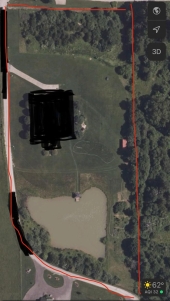





 2
2




 1
1




Andrew Mayflower wrote:Lost at least 2 meat chickens to crow (or raven) attack. Might have lost 1-2 more, can't tell yet. Getting some netting figured out. But what else do you all recommend?
Assuming carcasses are not salvageable. One was definitely too torn up. Other is marginal but not thinking it's worth the risk.




 1
1




Andrew Mayflower wrote:The 2 dead chickens were close to if not over 3lbs. Wife witnessed it killing one of the chickens. She saw 2 presumably Ravens working together.












Invasive plants are Earth's way of insisting we notice her medicines. Stephen Herrod Buhner
Everyone learns what works by learning what doesn't work. Stephen Herrod Buhner
 1
1




Invasive plants are Earth's way of insisting we notice her medicines. Stephen Herrod Buhner
Everyone learns what works by learning what doesn't work. Stephen Herrod Buhner
 6
6




A human being should be able to change a diaper, plan an invasion, butcher a hog, conn a ship, design a building, write a sonnet, balance accounts, build a wall, set a bone, comfort the dying, take orders, give orders, cooperate, act alone, solve equations, analyze a new problem, pitch manure, program a computer, cook a tasty meal, fight efficiently, die gallantly. Specialization is for insects.
-Robert A. Heinlein




 1
1




A human being should be able to change a diaper, plan an invasion, butcher a hog, conn a ship, design a building, write a sonnet, balance accounts, build a wall, set a bone, comfort the dying, take orders, give orders, cooperate, act alone, solve equations, analyze a new problem, pitch manure, program a computer, cook a tasty meal, fight efficiently, die gallantly. Specialization is for insects.
-Robert A. Heinlein












Stephan Quintavalli wrote:...and that is why they are called a Murder of Crows and not a flock! Anyway, I am surprised to hear they can take down sheep...I'm assuming it was a new born lamb?
 1
1




"The rule of no realm is mine. But all worthy things that are in peril as the world now stands, these are my care. And for my part, I shall not wholly fail in my task if anything that passes through this night can still grow fairer or bear fruit and flower again in days to come. For I too am a steward. Did you not know?" Gandolf
 3
3




"Them that don't know him won't like him and them that do sometimes won't know how to take him... he ain't wrong, he's just different and his pride won't let him do the things that make you think he's right"








Andrew Mayflower wrote:Well, so far the bird netting and strings we put up has kept the corvids at bay.
Invasive plants are Earth's way of insisting we notice her medicines. Stephen Herrod Buhner
Everyone learns what works by learning what doesn't work. Stephen Herrod Buhner




 1
1




A human being should be able to change a diaper, plan an invasion, butcher a hog, conn a ship, design a building, write a sonnet, balance accounts, build a wall, set a bone, comfort the dying, take orders, give orders, cooperate, act alone, solve equations, analyze a new problem, pitch manure, program a computer, cook a tasty meal, fight efficiently, die gallantly. Specialization is for insects.
-Robert A. Heinlein




"Them that don't know him won't like him and them that do sometimes won't know how to take him... he ain't wrong, he's just different and his pride won't let him do the things that make you think he's right"




 2
2





























 1
1




I am only one, but still I am one. I cannot do everything, but still I can do something; and because I cannot do everything, I will not refuse to do something that I can do. (E.E.Hale)
 3
3




Lorinne Anderson: Specializing in sick, injured, orphaned and problem wildlife for over 20 years.
 1
1




 1
1




 1
1




We've had Ravens attack and kill chickens - I've seen them - but they were healthy Ravens. Ravens are smart, so if it figures it's getting fed and cared for, it may actually be a deterrent for some other predators - small version of a guard goose. That said, they're known to like eggs, and a pair of them stole all the eggs from two nesting Muscovy I had this spring, going right into a structure to do so. I would observe and learn if I was in your position.Dan Willman wrote:I found a hurt Raven that is in with my chickens I have over a hundred birds seems to be getting along with them just fine
Visit Redhawk's soil series: https://permies.com/wiki/redhawk-soil
How permies.com works: https://permies.com/wiki/34193/permies-works-links-threads
 1
1




Visit Redhawk's soil series: https://permies.com/wiki/redhawk-soil
How permies.com works: https://permies.com/wiki/34193/permies-works-links-threads

|
All of life is a constant education - Eleanor Roosevelt. Tiny ad:
Play Your Way to a Sustainable Lifestyle: Uncover Permaculture Principles with Each Card
https://gardener-gift.com/
|







